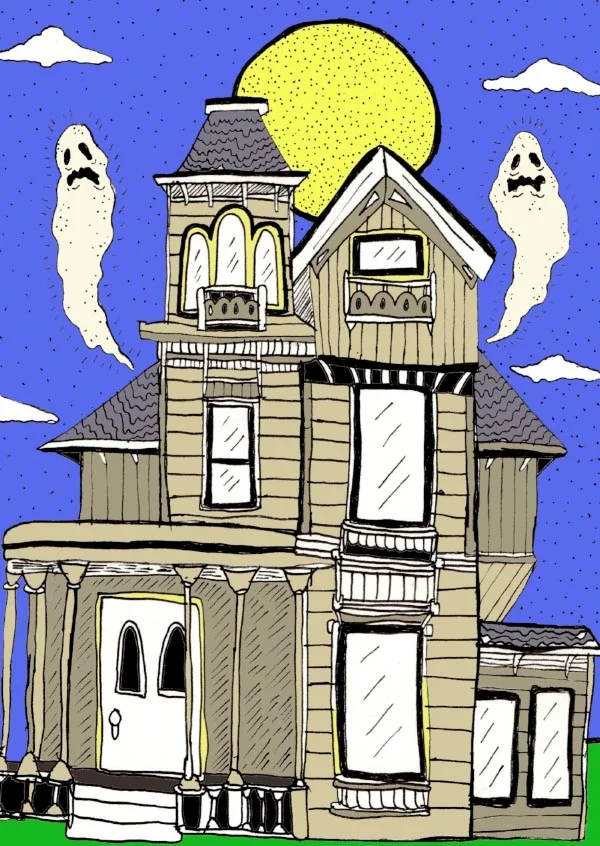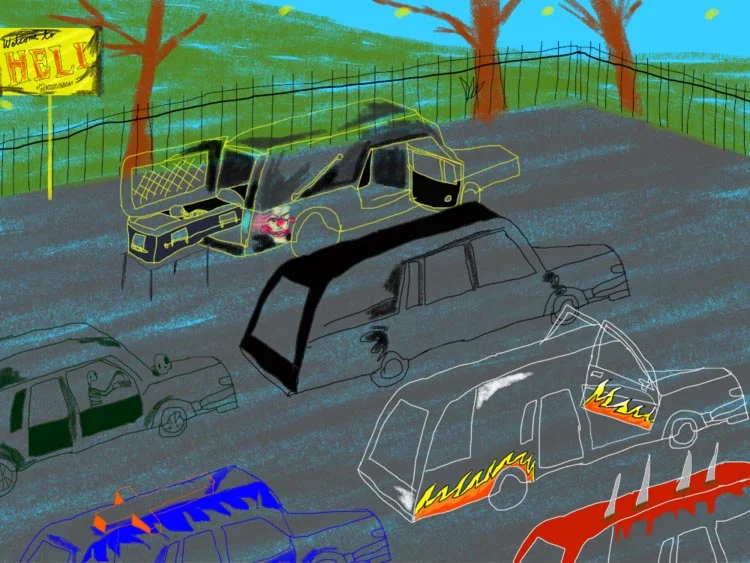The App That Saved Us From Scary Clowns During Halloween of 2016
How Canadian college students harnessed current events and a widespread phobia to help others — and amass a sizable profit.
By Jessie Schiewe
The scary clowns started appearing at the tail end of summer.
It was 2016, no more than two months before Halloween, when the hysteria began. People dressed in clown costumes and masks were seen haunting street corners, terrorizing apartment complexes, and stalking the edges of highways.
They lured children into the woods, frightened pedestrians by hiding in ditches, and attacked hikers on trailheads. Commuters waiting for subways, and passengers disembarking from buses, were chased by the clowns. Homeowners, taking out the trash at night, saw them waving eerily from beneath street lights.
Both children and adults fell victim to their creepy shenanigans, and no time of day was safe. The clowns seemed to strike whenever and wherever.
As the countdown to October 31st began, the clown sightings multiplied. What began as a national problem — with clowns reported in 49 states, as well as in Puerto Rico and the District of Columbia — soon spread to the rest of the continent, and eventually overseas. In places like Germany, Mexico, Australia, Singapore, Brazil, and the U.K., copycat incidents metastasized. Clowns began leaping out from bushes, trailing students to and from school, and forcing their way into peoples' houses.
Though inducing fear in others seemed to be their main goal, the clowns often had more nefarious intentions. An unsettling number of sightings reported the involvement of knives, guns, axes, and chainsaws. They terrorized schools with threats of mass shootings and victims with the possibility of murder. A clown in Chile chased onlookers with a baseball bat. One in Sweden stabbed a teenager. Another, spotted trespassing on the grounds of a Los Angeles elementary school, had written the word “KILLER” across its mask.
The clowns were brazen, too. They chased after cars, swiped cell phones, and robbed fast-food restaurants. Kidnap attempts were particularly common, with clowns inviting children to birthday parties, promising rewards of money and candy, or simply trying to grab them.
Panic spread. While some clowns were arrested, the vast majority were not. People demanded answers, protection, and justice. They began arming themselves with weapons. They clamored for investigations by the F.B.I. One poll, conducted in October of that year, found that Americans feared clowns more than climate change, terrorism, and death.
Amidst the contagion gripping the public consciousness, two Canadian college students sensed an opportunity.
They’d created apps before — games, mainly, that always failed to attract users and languished in app stores until they unlisted them. But with practice comes mastery, and now, looking back on their novice creations, they recognize them as preparation for what had yet to come. And that, of course, was the clowns.
Usama Saleem, then an 18-year-old student at John Abbott College, and Jordan Marcelino, a 17-year-old at Vanier College, were not unaware of the scary clown hysteria gripping the globe. They’d seen the memes, read the news, and viewed the YouTube videos. Though neither can pinpoint exactly when or why inspiration hit, it eventually became clear that they had found their next project. Using their combined skills in programming, design, and public relations, they would build an app to crowdsource clown sightings.
Together, with help from a friend in Montreal and two internet acquaintances from Russia and Kosovo, they got to work. Within four days, the app was complete and available for free download to both Android and iOS users. They called it Clown Spotter.
Being afraid of clowns is a known thing. Called coulrophobia, it’s an understandable fear because even if they aren’t chasing you with a machete or hammering their fists on the hood of your car, clowns are undeniably creepy.
Saleem and Marcelino were well aware of this. They had met a few years earlier, as teenagers working at a costume store in Montreal. During that time, they both recall selling a considerable number of clown costumes to customers. Marcelino described the guise as “a Halloween classic.”
Though neither had ever been spooked by one, even during the Great Clown Scare of 2016, they sympathized with those who feared them.
“The whole team, we weren’t really scared of them or anything like that,” Saleem told OK Whatever. “We just knew it was someone in a costume. But I think for some people, it can be kind of triggering, especially if they had past trauma with one.”
Clown terrorism is also nothing new. The fiendish characters have been tormenting people for decades. But in the fall of 2016, clown panic was at an all-time high.
Blame it on too much hype from the media or fanatic anticipation of the latest iteration of Stephen King’s It, but it was clear we were experiencing a pandemic. The clown-fearing among us weren’t just scared, they were terrified. Though staying up-to-date with the news helped keep them informed, it was a reactionary measure at best. There was no way of knowing when or where the next scary clown might strike. People felt helpless.
Clown Spotter couldn’t have come at a better time.
Unveiled in early October of 2016, it had a simple interface consisting of a map with user-submitted dots marking the locations of recent clown sightings.
Now, instead of waiting to become victims, people could use the Clown Spotter app to circumvent the creeps. Instead of being scared, they could just take another route. And if they still happened to run into a clown not marked on the map, they could at least warn others of its presence.
The genius behind Clown Spotter was so simple it was almost dumb. Saleem still recalls the skepticism he encountered from friends when he first told them about the project.
“They were like, ‘Wait, what do you mean clown spotting? What the hell does that mean?’” he said. “At first, it sounds really stupid. And, it was really stupid. But it turned out to be a good idea.”
By harnessing the public’s collective desire to avoid creepy clowns, the app took off fast, and only snowballed from there. Users were not only consulting Clown Spotter to spare themselves of frights, but they were helping it grow by inputting geolocations and photos of any clown sightings they experienced on their own.
Without crowdsourcing, Saleem and Marcelino would have been fucked. The map would have been empty of dots, bereft of the valuable information that drew users to the app in the first place. With crowdsourcing, they not only had a hit, but a way to ensure their app would keep growing — thanks to free labor — so long as clown sightings and the public’s fear of them persisted.
At its height, Clown Spotter attracted upwards of 100,000 users a day. Though Canada and the United States amassed the bulk of clown sightings, users from around the world, particularly in Europe, were contributing geotags of their own.
On both iOS and Android app stores, Clown Spotter ranked as a top free download, and media outlets, particularly in Montreal, began plugging the software in newscasts and articles. And, though it’s just a hunch, Saleem suspects local police forces used the app, too.
A lot of good ended up coming from Clown Spotter, which, admittedly, was not the impetus that spurred its creation in the first place.
“Basically, the whole point of the app was to make money,” Saleem said. “We were students and we really wanted an app that would go viral so that we could make some profit off it and help ourselves individually.”
Though some costs were necessary to get Clown Spotter off the ground and listed on app stores, each member of the five-person team ended up with sizable earnings.
For Saleem and Marcelino, the Clown Spotter funds covered their full college tuitions and then some. Though neither would reveal an exact number for how much they made, they hinted that it was “less than $50,000 but more than $10,000.”
Buoyed by Clown Spotter’s success, the quintet started making more apps. Among them were Circle Tap, a timed game promising to quicken users’ reflexes, and Timmy Turner, which helped users find the locations and menus of nearby Tim Hortons chains.
But those ventures were short-lived. As Saleem described it, none of them “had that spark,” and it wasn’t long before they pulled their plugs.
Meanwhile, the numbers of scary clown sightings began to dwindle.
Coulrophobics found increasingly fewer reasons to use the app. Less sightings meant less dots on the map, and less dots on the map meant there was less of a need to consult the software in the first place.
By the summer of 2017, the team made the unanimous decision to take Clown Spotter offline.
“At the end of the day, it didn’t make sense to pay for something when the trend was gone and no one was using it anymore,” Saleem said.
Now, roughly three years later, neither Saleem nor Marcelino have regrets about calling it quits when they did. They remember their time running Clown Spotter with fondness and give it partial credit to helping them get to where they are today.
Marcelino, who is now 20 and studying design at a university in Montreal, dedicated “a main part” of his admissions portfolio to the graphic design work he did for Clown Spotter. He’s pretty sure it’s partly to thank for helping him get in.
Saleem, 21, is still in school, too, studying software engineering with a minor in neuroscience at Concordia University in Montreal. Though he suspects Clown Spotter wasn’t influential in securing him a place at the school, his contributions to the app have influenced him in other ways.
“Learning how to work in a fast-paced environment and delegating tasks within a team was extremely beneficial — and it still helps today,” he said. “When we have projects at school, I know how to get things done faster and I know how to take initiative.”
They both also enjoy telling others about their one-time viral success. It’s a great conversation starter for future employers and a handy crutch for situations that call for an icebreaker.
More than anything, though, Clown Spotter has given its creators perspective.
“It helped me realize that everything on the App Store, or really, anything in the world, is just sort of made by regular people,” Marcelino revealed. “And so it gave me motivation to just try whatever I want. Because you never know what’s going to happen, so you might as well just go for it.”
As for scary clown sightings, they still happen today — but they’re not nearly as frequent as they were in 2016. And, when you don’t have a map telling you where the next one is, that, at least, is a comfort.



















Creative uses for ashes abound as people increasingly seek personalized memorials for their loved ones.